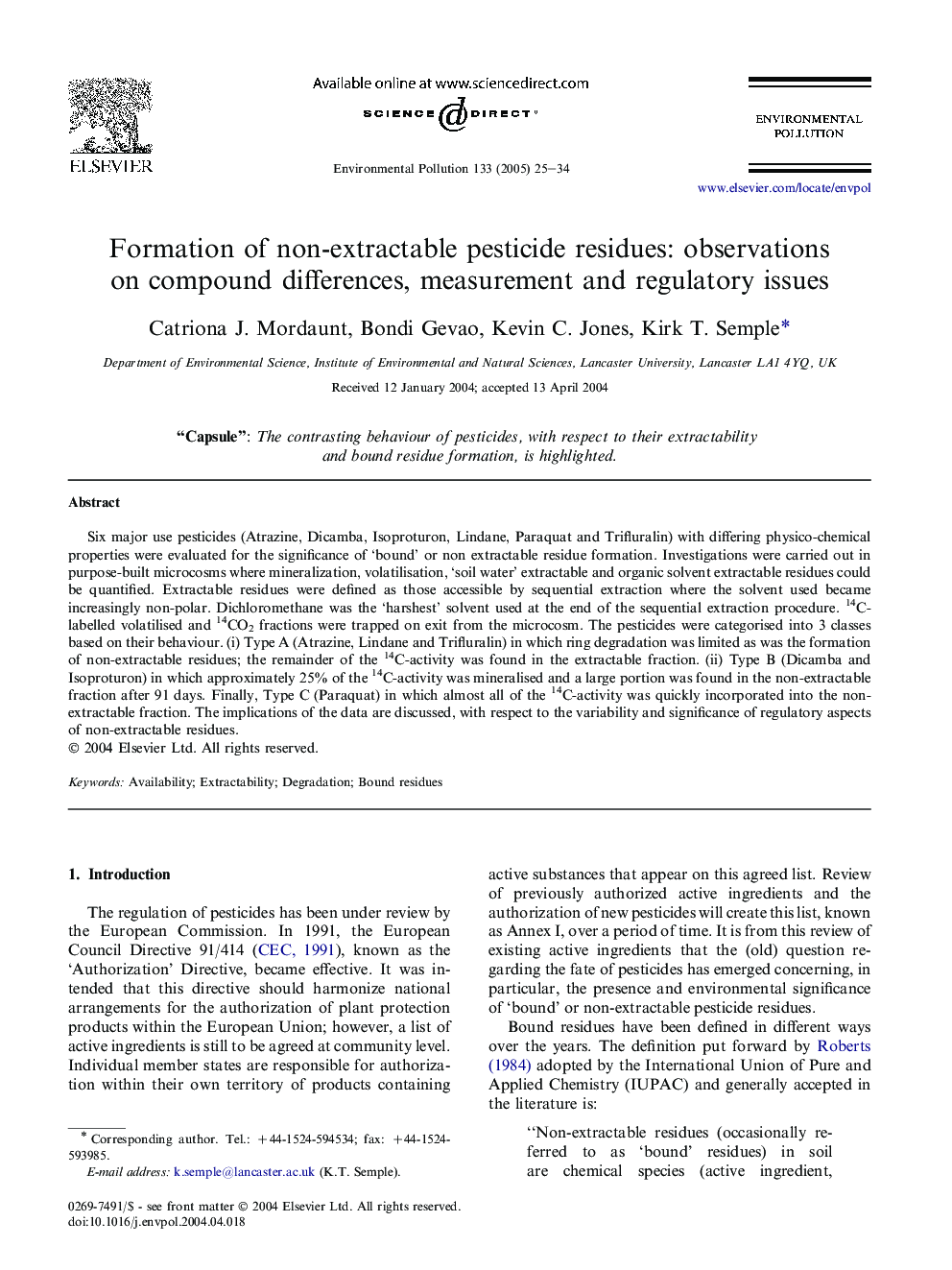| کد مقاله | کد نشریه | سال انتشار | مقاله انگلیسی | نسخه تمام متن |
|---|---|---|---|---|
| 9456514 | 1309200 | 2005 | 10 صفحه PDF | دانلود رایگان |
عنوان انگلیسی مقاله ISI
Formation of non-extractable pesticide residues: observations on compound differences, measurement and regulatory issues
دانلود مقاله + سفارش ترجمه
دانلود مقاله ISI انگلیسی
رایگان برای ایرانیان
کلمات کلیدی
موضوعات مرتبط
علوم زیستی و بیوفناوری
علوم محیط زیست
شیمی زیست محیطی
پیش نمایش صفحه اول مقاله

چکیده انگلیسی
Six major use pesticides (Atrazine, Dicamba, Isoproturon, Lindane, Paraquat and Trifluralin) with differing physico-chemical properties were evaluated for the significance of 'bound' or non extractable residue formation. Investigations were carried out in purpose-built microcosms where mineralization, volatilisation, 'soil water' extractable and organic solvent extractable residues could be quantified. Extractable residues were defined as those accessible by sequential extraction where the solvent used became increasingly non-polar. Dichloromethane was the 'harshest' solvent used at the end of the sequential extraction procedure. 14C-labelled volatilised and 14CO2 fractions were trapped on exit from the microcosm. The pesticides were categorised into 3 classes based on their behaviour. (i) Type A (Atrazine, Lindane and Trifluralin) in which ring degradation was limited as was the formation of non-extractable residues; the remainder of the 14C-activity was found in the extractable fraction. (ii) Type B (Dicamba and Isoproturon) in which approximately 25% of the 14C-activity was mineralised and a large portion was found in the non-extractable fraction after 91 days. Finally, Type C (Paraquat) in which almost all of the 14C-activity was quickly incorporated into the non-extractable fraction. The implications of the data are discussed, with respect to the variability and significance of regulatory aspects of non-extractable residues.
ناشر
Database: Elsevier - ScienceDirect (ساینس دایرکت)
Journal: Environmental Pollution - Volume 133, Issue 1, January 2005, Pages 25-34
Journal: Environmental Pollution - Volume 133, Issue 1, January 2005, Pages 25-34
نویسندگان
Catriona J. Mordaunt, Bondi Gevao, Kevin C. Jones, Kirk T. Semple,